From waterfalls to snowy forests, Egyptian posters show what exotic looks like from the desert
Art. (in English) in The Conversation (2017)

Vincent Battesti — From waterfalls to snowy forests, Egyptian posters show what exotic looks like from the desert
in The Conversation, Global edition 2017,
published March 23rd 2017.
ISSN: 2201-5639
Online: https://theconversation.com/from-wa...
PDF File: https://hal.science/hal-01716785
![]()
This article is based on my Collection of fantasy landscapes posters.
The version published in French of this paper is slightly different.
– Editorial from the weekly newsletter of The Conversation, March 24th 2017
Our paper is the top story.
Editor’s note
We may think of Egypt as the land of pyramids and palm trees, but Egyptians have their own ideas of what an exotic landscape looks like, adorning their homes and businesses with colourful posters that depict a mash-up of English gardens dotted with Swiss chalets, or Chinese pagodas accented by tropical waterfalls and sculptural fountains.
Vincent Battesti explains how this pastiche wall art is not just kitsch – it represents idealised nature, exoticism and Egyptian’s embrace of a globalised world.
Clea Chakraverty
Commissioning Editor
The Conversation is an independent source of news and views, from the academic and research community, delivered direct to the public..
From waterfalls to snowy forests, Egyptian posters show what exotic looks like from the desert
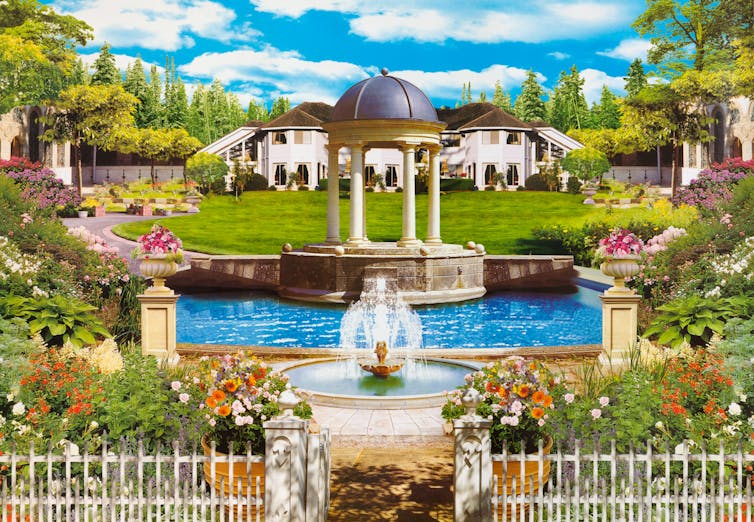
Vincent Battesti, Muséum national d’histoire naturelle (MNHN) – Sorbonne Universités
Egypt is a tourist destination famous for its archaeological sites, natural beauty and ancient culture. But fascination can be found even in more mundane places, as in an unusual form of wall art ubiquitous in Egyptian apartments and small businesses.
Not quite photographs, the posters are photoshopped representations of numerous natural environments or differing architectural styles, juxtaposed in improbable ways. These made-in-Egypt mandhar ṭabīɛī, or “natural landscapes” – which range in size from small, 50-by-35 cm framed images to wallpaper-scaled – reveal a particularly Egyptian form of exoticism.
All the posters illustrating this article come from my 2009 fieldwork in Cairo, purchased for just a few Egyptian pounds (less than 1 US$). These idealised images are displayed across the country, in private indoor spaces, coffee shops, restaurants, hairdressers, and rural and urban areas, but are especially common in the arid Sinai countryside, Libyan desert and west Mediterranean coast.
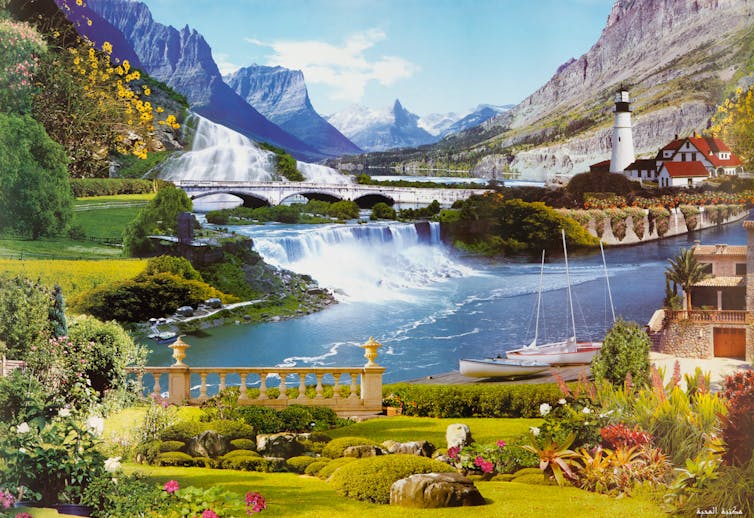
The posters depict a version of the “exotic” not centred on ordinary date palms, flat fields or mundane sand dunes – all clichés used in tourist catalogues to attract visitors to Egypt. Instead, they express a more local aesthetic form, far removed from Western standards.
Nature’s Photoshop artisans
I at first incorrectly assumed that these posters were cheap Chinese products filling a niche Egyptian market. In fact, they are designed and produced in the Shubra neighbourhood of Cairo or the nearby suburbs. Maktaba al-Maḥaba, a major Coptic Christian bookstore (مكتبة المحبة القبطية), distributes their catalogues across Egypt (and apparently throughout the North Africa region, as I have since noticed some posters in Tunisia’s Jerid oasis and the Moroccan Rif).
The main design tool in these Egyptian cut-and-paste compositions is clearly Photoshop (or a similar software). The craftsmen show great mastery of pasting, fusion, blurring, cropping, scaling, duplication and other techniques, creating on their computer monitors three-dimensional scenes encompassing all the best of different continents – even if it means implausible coexistences and genuine problems with scale.
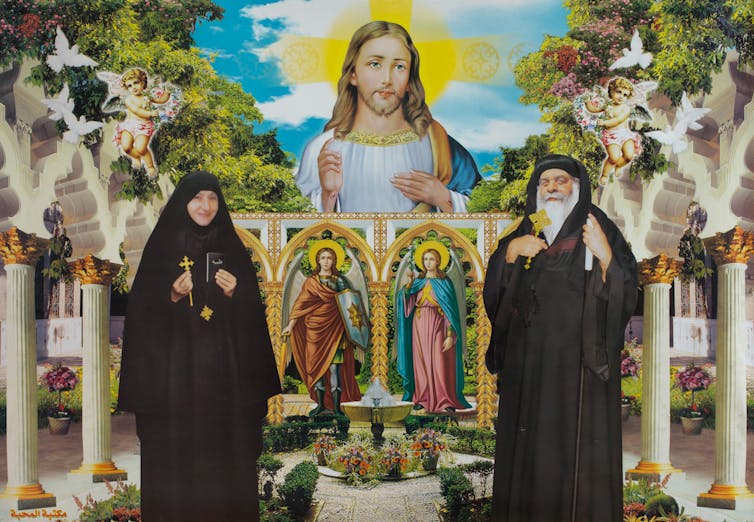
The artisans of the Maktaba al-Maḥaba shoppe, who don’t hesitate to cater to the Christian community by printing Jesus Christ or the late Pope Shenouda III in these bucolic settings, undoubtedly inherited the Coptic iconographic know-how behind the store’s endless production of pious images depicting triumphant saints, benevolent popes and monks, and suffering martyrs.
Snow, rainforests, Christs and Chinese pagodas
Water is everywhere in these posters, its presence seemingly required by consumers. It may be a sea, a lake, a river (sometimes with fanciful route), or, of course, those elaborate fountains.
The other prerequisite is greenery and a rich palette of florals – regardless, again, of botanical, agronomic or ecological incongruities and impossibilities. The posters are saturated with garden motifs, leaving some space for the sky but very little room for humans or animals.
Architectural elements reflect not just Islamic motifs (columns, ceramics) but also styles quite foreign to Egypt, such as Californian villas, Chinese pagodas and Scandinavian lighthouses. Other exotic landscapes include reproduction photos of snowy Swiss mountains with equatorial rainforest waterfalls, punctuated by the palace of Versailles or other Renaissance-style building, plus Islamic ponds with lush floral arrangements – and perhaps a yacht or ice floe in the background.
Sometimes, there’s a photographic enlargement of an English garden in its autumn glory. But, in general, natural nature is not enough, and the thirst for exoticism triumphs.
What is exoticism? What is ‘natural’?
These posters are prominently displayed across Egypt, offering visual delight in gas stations and local eateries. In Siwa, a remote oasis in the Libyan desert of Egypt, I spotted them in the marbūɛa (living room) of houses.
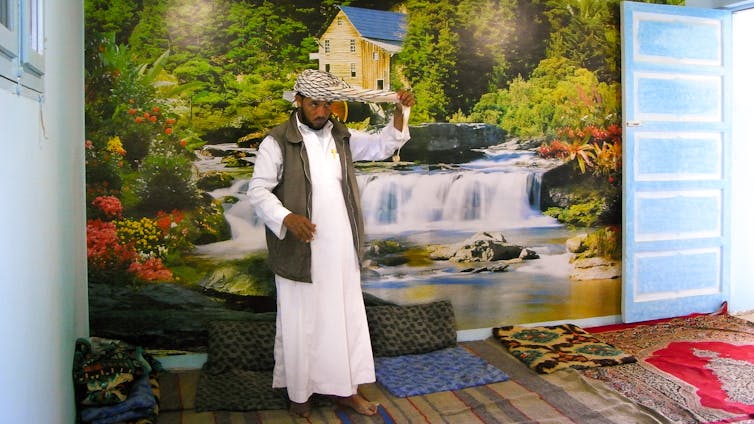
Siwa inhabitants do not see their landscape as particularly original or interesting. Meanwhile, tourists who come to Siwa do not focus on the area’s true agro-ecosystem but look beyond at a more familiar scene, the “already known” oasis of their Western imagery, an iconic Eden landscape that conforms with their own perception of exoticism.
This observation supports social anthropologist Gérard Lenclud, who said that landscape is:
“the product of the view of someone who is ‘foreigner’ to it. Man doesn’t think of elaborating a landscaped representation of the place to which he is attached and where he works or lives.”
Exotic is always found elsewhere, beyond the horizon.
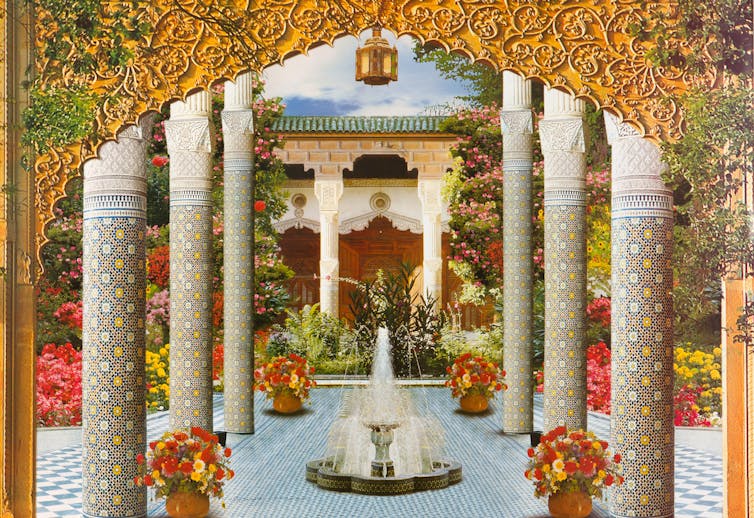
What does this reveal about Egyptians’ ideal of nature? In accumulating images from other eras and places, these posters create an exotic space located somewhere between the nostalgia for a lost Eden and the promise of Paradise. The inclusion of Islamic golden-age gardens, Swiss chalets and Atlantic lighthouses also reveals the attractiveness of a globalised world.
The amassing of elements speaks for itself: saturation is probably the key concept of popular aesthetics, part of the pursuit of sensorial experience. The beholders of these mandhar ṭabīɛī constructions do not distinguish between “natural” nature and artificial renditions. In interviews I found that Siwa residents either do not notice this phoney flavour or do not care about its inauthenticity.
Dreams of lush gardens
What Egyptian consumers do clearly prefer is that the posters’ iconic jumble should be organised according to repeating patterns of three main elements: flora, water, and architecture. Some of these elements reappear from poster to poster – the same fountain can be recognised stretched a bit here, or with a different basin there.
I could unwittingly track the biography of some key patterns as I vainly sought evidence of a similar craft around the world. The mill sometimes seen in the midst of a lush tropical vegetation, for example, is “sampled” from a poster entitled “Glade Creek Grist Mill, Babcock State Park, West Virginia” (credited to Robert Glusic). The original is an already romanticised depiction of a tourist attraction in Babcock State Park in West Virginia, United States.

In Egypt, a simple reproduction of this image does not suffice. That distinguishes its popular aesthetic tradition from Europe’s, where, according to Jean-Claude Chamboredon in the collective book, Protecting Nature: history and ideology, “the countryside as an idyllic social setting results from a long process of progressive disappearance of the rural proletariat … since the second half of the 19th century”.
The French countryside has become an ideal, neutral space whose very construction (via a history of social struggles) is erased and replaced with a narrative of an authentic, traditional and beautiful seasonally-changing subject. (I recall now the plywood-mounted poster of a continental forest that my parents proudly displayed in our living room in Le Havre, France.)
![]() Not so in North Africa and Egypt. In deserts, it seems, the people dream of lush gardens and Italianate palaces that allow them to be swept away, if only for a moment, from arid native soil.
Not so in North Africa and Egypt. In deserts, it seems, the people dream of lush gardens and Italianate palaces that allow them to be swept away, if only for a moment, from arid native soil.
Vincent Battesti, Chercheur CNRS en anthropologie sociale (au Musée de l’Homme), Muséum national d’histoire naturelle (MNHN) – Sorbonne Universités
La version originale de cet article a été publiée sur The Conversation.
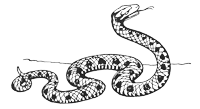

 vbat.org
vbat.org


